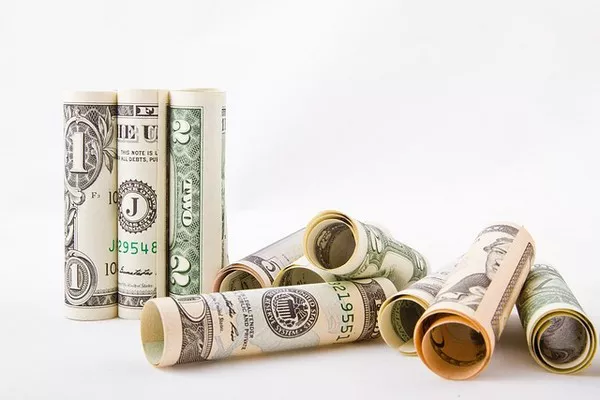The U.S. dollar is on a robust uptrend, propelled by mounting apprehensions regarding persistent inflation and the Federal Reserve’s capacity to implement interest rate adjustments compared to other central banks.
Since the onset of the year, the U.S. dollar index, a gauge measuring the dollar’s strength against a basket of major currencies, has surged by 4.6%, nearing its peak levels since early November. Notably, last week witnessed a substantial 1.7% surge in the index, marking its most significant weekly gain since September 2022.
Market sentiment is increasingly leaning towards the belief that the Federal Reserve will need to maintain interest rates at their current levels for an extended period to counteract potential inflationary pressures. This conviction was further reinforced by stronger-than-expected consumer price data released last week, prompting investors to scale back their expectations of interest rate cuts in 2024. Initial expectations at the beginning of the year had priced in 150 basis points of cuts, whereas current futures markets indicate a mere 50 basis points.
In contrast, other global central banks, including the European Central Bank, the Bank of Canada, and Sweden’s Riksbank, are viewed as having greater leeway to ease monetary policy. This marks a notable departure from previous expectations, which had positioned the Federal Reserve as the frontrunner for rate cuts.
Widening yield differentials between the U.S. and other economies have further bolstered the dollar’s rally, as higher U.S. yields enhance the appeal of dollar-denominated assets. Notably, the spread between U.S. and German two-year bond yields has reached its widest level since 2022, following indications from the European Central Bank of potential rate cuts.
Bullish sentiment towards the dollar has intensified, with net bets on the currency in futures markets reaching their highest level since August 2022. Central banks worldwide have adopted divergent policy stances in response to varying inflationary pressures, with some opting to cut rates while others have shown reluctance to ease.
Despite the Bank of Japan’s decision to terminate eight years of negative interest rates, the Japanese yen has weakened to near 34-year lows against the dollar. This depreciation is driven by expectations of a more hawkish stance from the Federal Reserve compared to the European Central Bank, contributing to a 3.6% decline in the euro against the greenback this year.
A stronger dollar may complicate inflation management for other economies by exerting downward pressure on their currencies while also tightening financial conditions in the U.S. Additionally, it could pose challenges for U.S. multinationals by increasing the cost of converting foreign profits into dollars and diminishing the competitiveness of their exports abroad.
Geopolitical uncertainty, particularly regarding the Middle East conflict, has further bolstered demand for the dollar. Moreover, the Fed’s quantitative tightening policy, allowing assets to run off its balance sheet, could provide further support for the dollar’s strength.
While some analysts anticipate continued appreciation of the dollar, others suggest that recent gains may have already priced in much of the bullish news. Nevertheless, favorable rates and spreads suggest continued support for the dollar in the near term.


